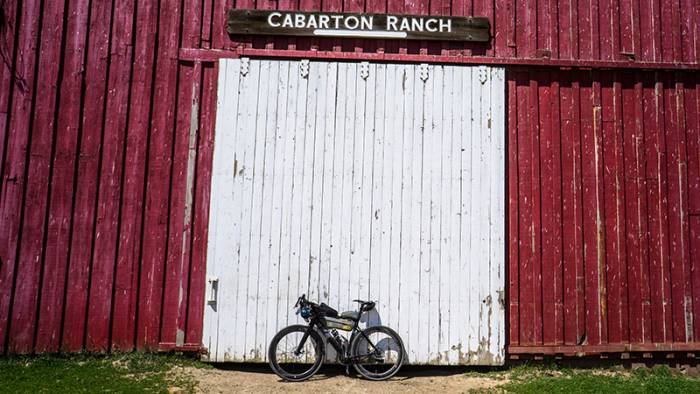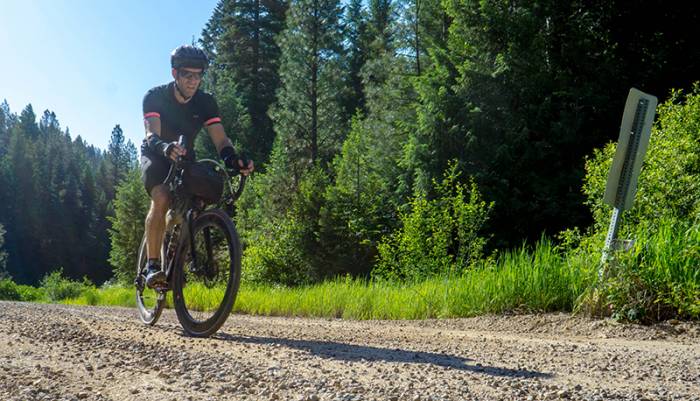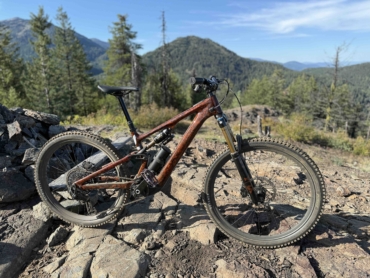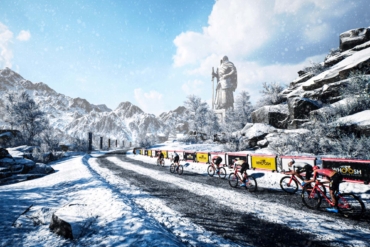Preparing for an epic physical challenge — like biking self-supported for 400 miles — comes down to dialed training secrets. Our own coach tells us how to prepare for race day and what to watch out for.
A 400-mile bike race starting and ending at my neighborhood bar — no entry fee, no prizes, no support, no fanfare? Sign me up!
Bikepacking can be a catchall term for all things bike touring. And that includes a niche ultra sport where riders follow a predetermined route in self-support style over tarmac, gravel, and singletrack. Think “The Cannonball Run,” but on two wheels … and without Burt Reynolds.
I haven’t raced in years. I’m cheap thrifty enough that I can’t wrap my pocketbook around paying to participate in an event with a high probability of (a) throwing up or (b) not finishing.
But a 400-mile event literally starting and finishing at my local watering hole, with a “show up and ride” policy (read: free admission), piqued my interest. And I had heaps of questions.
In the month leading up to the Smoke ‘n’ Fire 400, I’ll be asking some seasoned cyclists about how to prepare for such a serious bikepacking race.
10 Pointers for Bikepacking Training
Some (wise) riders line up to tour the route, parsing the mileage out over five days with sitdown meals, the comforts of a sleeping bag, and a good night’s sleep. Other poor souls (who lack pain sensors) throw their bodies at the course, charging the route at a nonstop pace, finishing quad-shot century rides in 40 hours and change.
For this first installment, I reached out to GearJunkie climbing editor Seiji Ishii to chat about a proper training plan. Ishii is a former coach with Carmichael Training Systems and Training Peaks, and now runs his own business, coaching amateur and professional athletes.
Here’s Coach Seiji‘s advice on how to get the most out of your training miles.
1. Start Your Training Early
For someone who’s not “off the couch” and has a decent level of fitness, plan 12 to 20 weeks to train for an event. Of course, it’s highly dependent on the rider’s base level of fitness and performance goals: Less fitness with higher goals equals a longer training period.
2. Train for Time (Not Miles)
The body doesn’t understand miles. But it speaks fluently in intensity and duration. Training for aerobic events usually prescribes an intensity zone for a duration, dosed by week.
Of course, these are dependent on the available training hours per week and the parameters of the event. Since bikepacking will put you in the saddle for hours at a time, inevitably you’ll want to build long rides into your training plan to acclimate the legs (and butt) to a continual flogging, hour upon hour.
3. Develop a Training Narrative
Like a good story, training has an arc. It starts by building a base in the saddle focused primarily on lower-intensity aerobic work. It’s not sexy work, but it pays dividends later in the season. Look at it as a way to catch up on Netflix.
Depending on the event, you then introduce tempo, anaerobic threshold, and strength-related riding. For bikepacking (high aerobic, low power), the middle chunk of training should build on the base by “bricking” back-to-back rides in the saddle to toughen up the legs.
The height of training should climax about one month out from your event, followed by a taper (more on that later).
4. Train in Blocks
Break your training cycle into three- to four-week sessions. Younger athletes can consume training in four-week blocks, but older populations do better with three-week stints.
Example: If you’re in a four-week block, use the first three weeks to increase your strength and endurance. Chase that with a recovery week at 50 percent workload to “free up” energy to adapt to the block of work done in the first three weeks.
What’s good for the body is also great for the mind. Use the down week as a mental incentive to reward yourself for your hard effort.
Similarly, each week can be broken down into “mini-blocks,” building up strength and endurance. And take a day off to let the body recover and adapt.
5. Cross Train
While cycling is fairly low impact, accessory training (like mobility, strength, and resistance training) can reduce injuries that can creep up from repetitive motions.

Try to incorporate one to two days of weight training to increase your core strength and balance riding-specific muscles. Hunching over the bars day after day can strain the back and tire the arms, both used to stabilize the body in one position for hours on end.
6. Be Flexible
Training plans are always written as best-case scenarios. And the body doesn’t differentiate between sources of stress; whether it’s caused by training, parenting, work, or travel, stress is stress and affects the body similarly.
The trick is to massage the formula of training stress and life stress with recovery modalities to ensure consistent gains. I don’t think the professional athletes I’ve worked with hired me to teach them how to train: I think they hired me to help with the mental game and the balancing act of family, career, etc.
In training for bikepacking or any other serious pursuit, you will have to incorporate flexibility into your routine to ensure you’re not overstressing your body or mind.
7. Build in Milestones
Real training plans have process-oriented goals that are inserted at regular intervals.
If you use a power meter, then, by nature, your program could have results-oriented goals as often as desired/helpful.
For a bikepacking event, use long rides as milestones in both process- and results-oriented goals. Long rides build confidence and can prepare you for the terrain. They also allow you to dial in nutrition, gear, and hydration — aspects of riding which are hard to experience on shorter rides.
8. Taper
Pre-event tapers are essential, proven, and should always conclude your training cycle. The length and steepness of the taper depend on the duration and consistency of your training program as well as the goal event’s characteristics.
Depending on your fitness, plan for two to four weeks to taper before your event.
9. Train Mentally
Mental training is often overlooked. Evaluate yourself: How much does your race result depend on mental factors? In your overall training program, do you dedicate enough time to mental preparation?
Ultracyclist Jay Petervary, a renowned racer of ultradistance events like the Arrowhead 135 and Tour Divide, says people often undervalue psychological readiness. Getting the right attitude, setting goals, and being honest with yourself are, in his opinion, even more important than laying down the miles. Training the mind is crucial to performance.
10. Balance Stress and Recovery
Without a doubt, the most common threat to training is balancing the stress-recovery equation. And stress from life is often overlooked.
Recovery efforts can also be stymied by life and not respecting the physiological and training processes.
Events come down to execution: Athletes can fall victim to ego, fear, and other emotional or irrational thoughts only to abandon a solid event execution plan.
Yet older athletes that are physiologically declining can continue to improve in race results because they stick to the plan and avoid emotional detours in both training and race execution. Once you’ve created a plan and dedicated your time to it during the training phase, trust your training when it’s time for the big day.









